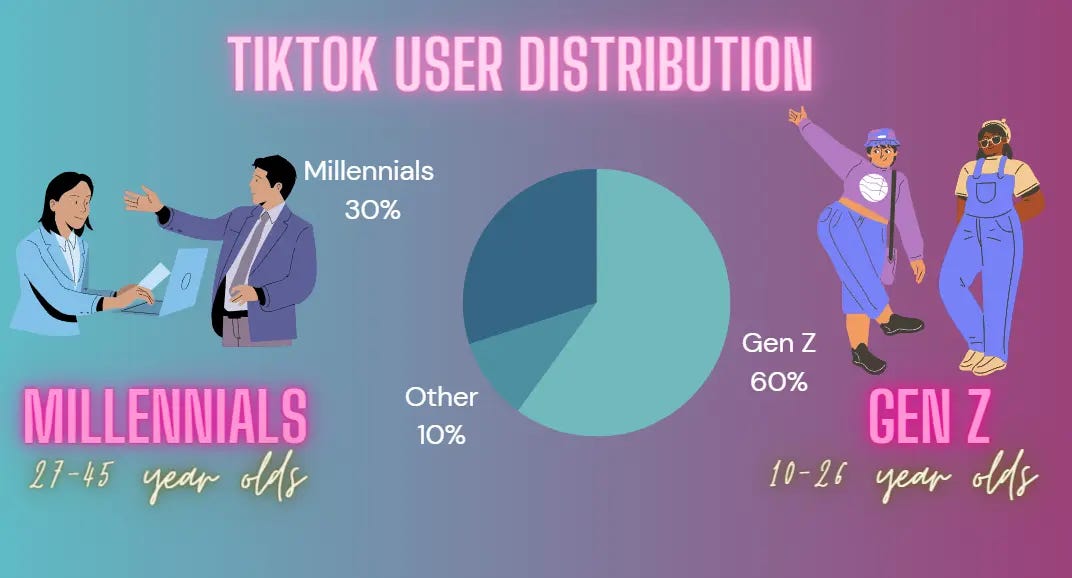Navigating TikTok's Word Filters: What You Can't Say and Popular Alternatives
Like all social platforms, TikTok has a set of community guidelines designed to maintain a safe and welcoming environment.
TikTok, the vibrant social media platform that boasts over a billion users worldwide, has transformed how we create and consume content. And right now it is targeting Gen Xers hard. However, this new found attention comes with some sacrifices.
Like all social platforms, TikTok has a set of community guidelines designed to maintain a safe and welcoming environment. Part of these guidelines includes filters that restrict certain words and phrases to prevent harmful, inappropriate, or misleading content. Knowing these restricted words and their popular alternatives can help creators navigate the platform's rules while still delivering engaging content.
Words You Can't Say on TikTok
TikTok’s moderation system uses algorithms and human reviewers to monitor content. While the exact list of banned words isn't publicly disclosed for security reasons, several categories of words are commonly understood to be restricted:
Profanity and Offensive Language: Obvious cuss words and slurs are flagged.
Hate Speech and Discrimination: Words promoting racism, sexism, homophobia, and other forms of hate speech are strictly prohibited.
Violence and Self-Harm: Terms related to violence, self-harm, and suicide are heavily moderated to protect users.
Sexually Explicit Content: Words and phrases describing explicit sexual acts or innuendos are restricted.
Misinformation and Dangerous Activities: Words that spread false information or promote dangerous challenges and activities are banned.
Popular Replacements
Creators have developed a creative lexicon of alternatives to navigate these restrictions while still conveying their messages. Here are some popular replacements for commonly restricted words:
Profanity and Offensive Language
"F*"** becomes "frick" or "fudge".
"Sh*t" becomes "shoot" or "sugar".
"D*mn" becomes "dang" or "darn".
Hate Speech and Discrimination
Instead of directly addressing specific slurs or hate speech, creators use broader terms like "toxic behavior" or "negative comments" to discuss these issues.
Violence and Self-Harm
"Suicide" or "self-harm" might be referred to as "unaliving" or "self-injury".
"K*ll" can be replaced with "end" or "destroy" in the context of games or metaphors.
Sexually Explicit Content
"Sex" is often replaced with "seggs" or "intimacy".
"Naked" can be switched to "nakey" or "undressed".
"Porn" is frequently referred to as "corn" to bypass filters.
Misinformation and Dangerous Activities
Describing dangerous activities without encouraging them is key. "Stunts" can replace words like "challenges" when discussing potentially harmful trends.
The Role of Censorship in Content Creation
TikTok’s censorship and word filters have sparked discussions about freedom of expression versus the need for community safety. While some argue that these filters can limit creativity, others believe they help in reducing online toxicity and preventing harm.
For content creators, these guidelines necessitate a balance between creativity and adherence to platform rules. The workaround language developed by TikTok users showcases the adaptability and ingenuity of the community. Understanding these replacements is crucial for anyone looking to grow their presence on TikTok without falling afoul of its guidelines.
Tips for Staying Compliant
Stay Informed: Regularly review TikTok’s community guidelines and updates to avoid inadvertently breaking rules.
Use Euphemisms Wisely: Be creative but clear. Your audience should understand the message without you risking a ban.
Engage Positively: Focus on creating content that inspires and entertains, steering clear of controversial or harmful topics.
In conclusion, while TikTok’s word restrictions might seem daunting, they are navigable with a bit of creativity and awareness. By understanding and using popular replacements, creators can continue to produce compelling content that resonates with audiences while staying within the platform’s guidelines.

FYP - For You Page
The “For You Page”, commonly shortened to “FYP”, is TikTok’s curated feed of content served up to users based on their past activity and interests. The content is a mix of people you already follow and other related or viral and trending content. TikTok’s algorithm is known for being incredibly accurate, creepily so. After only a short time using the app and interacting with content, the app is able to connect you with very relevant content and creators. This is part of why the app can be such a powerful marketing tool, especially for small businesses — it has the ability to connect you to a niche audience quickly and effectively.
Since the “FYP” is made up of the best of the best of the video content on the app, anything that sets off a red flag to the TikTok bots is likely to get your content pulled from the FYP. Instead users will only be able to find it by visiting your profile or, if they are following you, on the “Following” or “Friends” feeds.
What Happens if Your Content is Flagged?
Depending on the situation a few things may happen. Your content may be simply removed from the “FYP” or shown to fewer people even on the “Following” or “Friends” feeds.
However, if TikTok feels that your content violates their community guidelines your content may be hidden, put under review, or removed. You can appeal a removal, but overtime cumulative violations can cause you to lose the ability to post or comment, or your account may be at risk of being permanently deleted.
This makes the platform especially difficult for businesses that handle what are considered to be more sensitive or controversial topics. For example, we’ve worked with a number of boudoir photographers who have struggled to grow a following on the platform because their content is constantly flagged.








